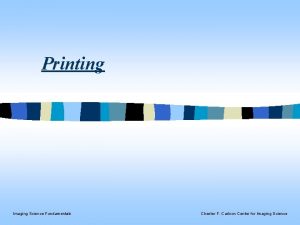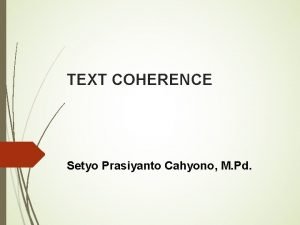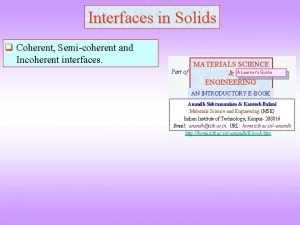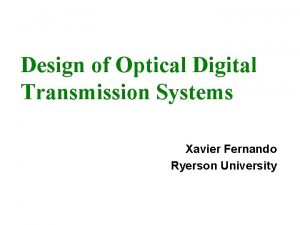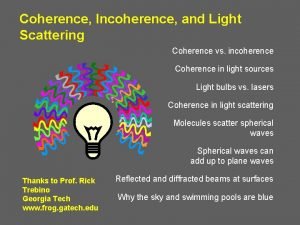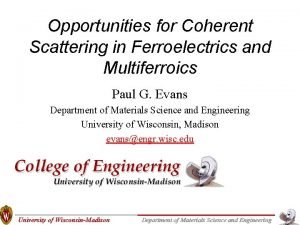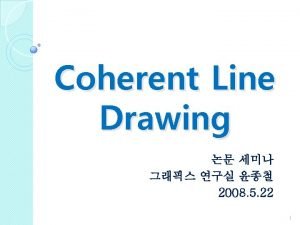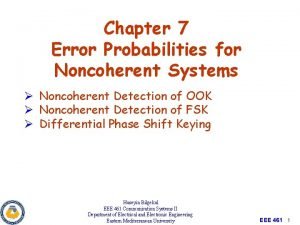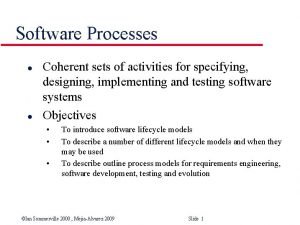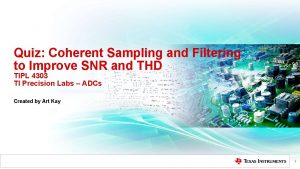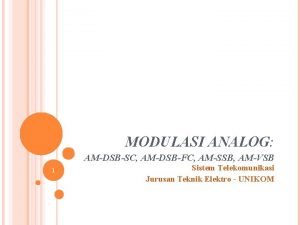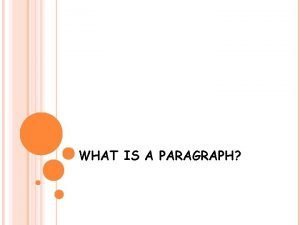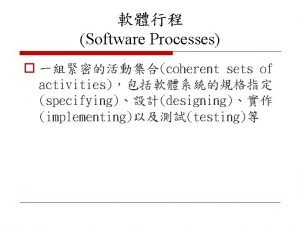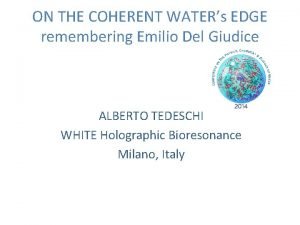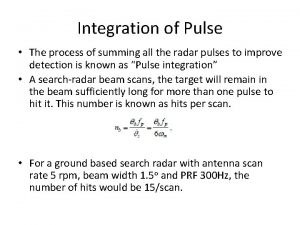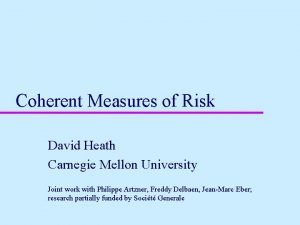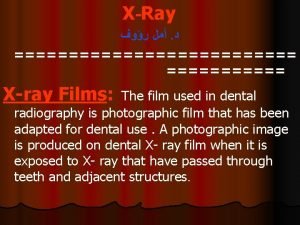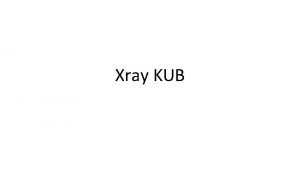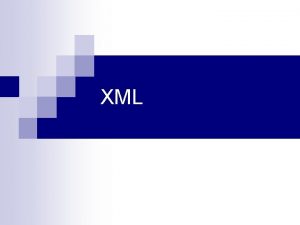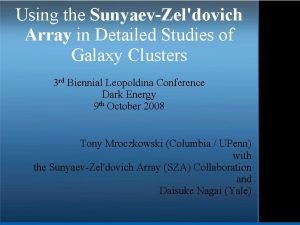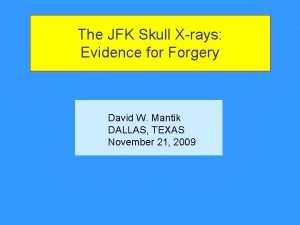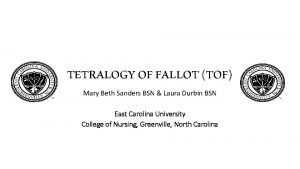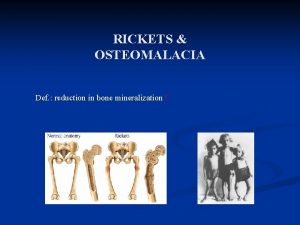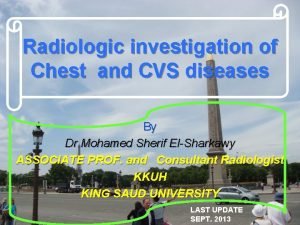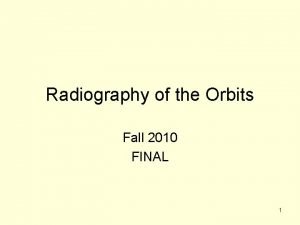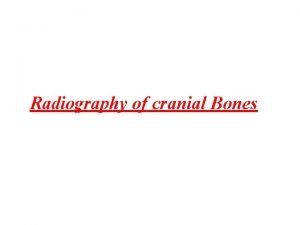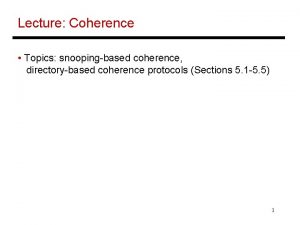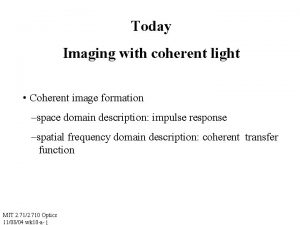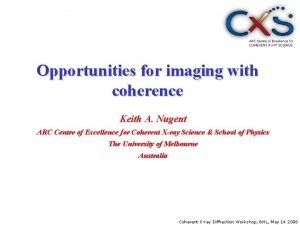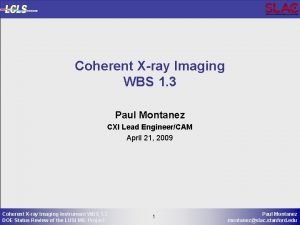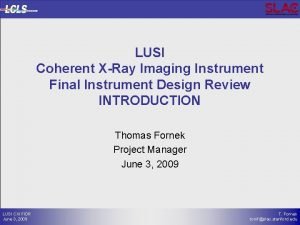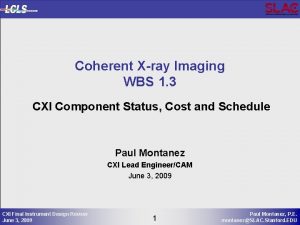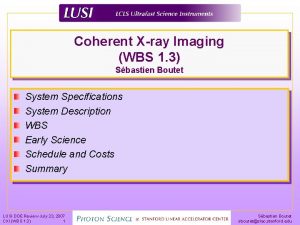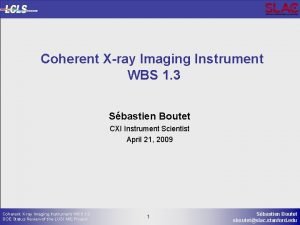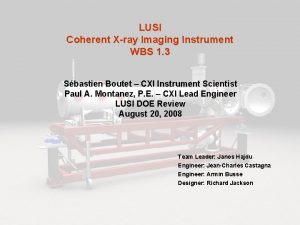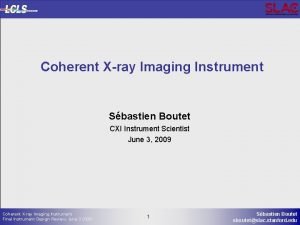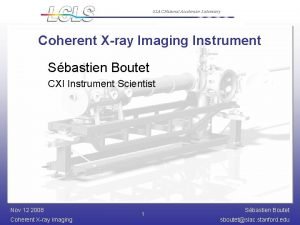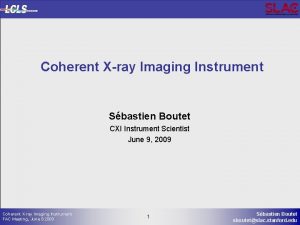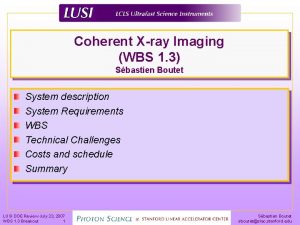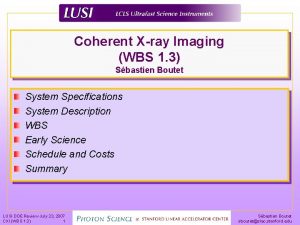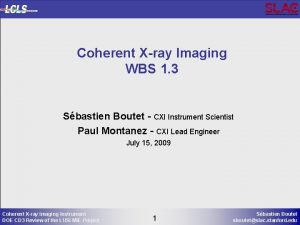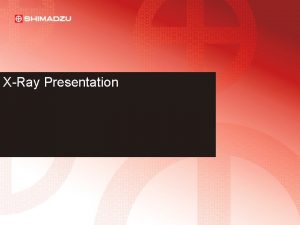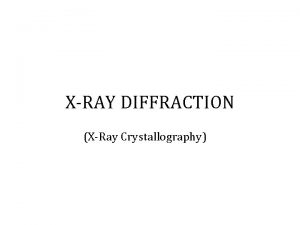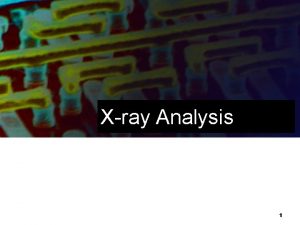Coherent Xray Science Coherence Imaging Molecules Keith A










































- Slides: 42

Coherent X-ray Science: Coherence, Imaging & Molecules Keith A. Nugent ARC Centre of Excellence for Coherent X-ray Science & School of Physics The University of Melbourne Australia

Plan of presentation • Develop a view of coherent diffractive imaging including partial coherence. Describe CDI and identify three limits within the framework of partial coherence – Coherent – Partially coherent illumination – Time varying object • Describe the method – Essential developments – Applications in biology – Applications in materials science • Partial coherence in CDI – How important is it? – How can coherence be measured – Building partial coherence into the reconstruction • Time varying objects as partially coherent diffraction – Some thoughts…


Formalism for CDI In far-field: The far-field intensity is therefore

Three limits 1. CDI with coherent light & static object: • Harmonically varying (ie. coherent) incident field; static object 2. CDI with partially-coherent light & static object: • Random variation in incident field; static object 3. CDI with coherent light & dynamic object: Molecular dynamics • Coherent incident field; variation in object

Plan of presentation • Develop a view of coherent diffractive imaging including partial coherence. Describe CDI and identify three limits within the framework of partial coherence – Coherent – Partially coherent illumination – Time varying object • Describe the method – Essential developments – Applications in biology – Applications in materials science • Partial coherence in CDI – How important is it? – How can coherence be measured – Building partial coherence into the reconstruction • Time varying objects as partially coherent diffraction – Some thoughts…

“Conventional” coherent diffractive imaging 1. CDI with coherent light & static object: • Harmonically varying (ie. coherent) incident field; static object

Coherent imaging methods are being developed. Coherent Field Impose Measured Intensity, Keep Phase z Impose “support” Guess Phase

First Demonstration • Assumes complete coherence • Object must be finite in extent


The Shrinkwrap Algorithm


Spherical wave

Fresnel diffraction imaging




Biological Applications




Materials Applications





Plan of presentation • Develop a view of coherent diffractive imaging including partial coherence. Describe CDI and identify three limits within the framework of partial coherence – Coherent – Partially coherent illumination – Time varying object • Describe the method – Essential developments – Applications in biology – Applications in materials science • Partial coherence in CDI – How important is it? – How can coherence be measured – Building partial coherence into the reconstruction • Time varying objects as partially coherent diffraction – Some thoughts…

Conclusion Algorithms implicitly assume a very high degree of spatial coherence. A very high degree of spatial coherence is required for reliable, high-resolution image recovery.

Including partial coherence

Longitudinal coherent modes

Coherence function Mode occupancy (spectrum) Spatial coherent mode

z

The Complex Degree of Coherence

S Flewett, HM. Quiney, CQ Tran and KA. Nugent, Extracting Coherent Modes from Partially Coherent Wavefields, Optics Letters, submitted Three coherent modes

The effects of partial coherence can be included in the analysis and provide a significantly greater degree of stability in the reconstruction

Plan of presentation • Develop a view of coherent diffractive imaging including partial coherence. Describe CDI and identify three limits within the framework of partial coherence – Coherent – Partially coherent illumination – Time varying object • Describe the method – Essential developments – Applications in biology – Applications in materials science • Partial coherence in CDI – How important is it? – How can coherence be measured – Building partial coherence into the reconstruction • Time varying objects as partially coherent diffraction – Some thoughts…

Three limits – Limit Three 3. CDI with coherent light & dynamic object: • Coherent incident field; variation in object Studies have been predicated on the need for the condition:

The need for short pulses



Summary • Coherent x-ray imaging techniques are well developed. • Methods are emerging that allow the inclusion of the effects of partial coherence. • The imaging of a system that is effected by the pulse can be formulated as a problem of partial coherence. • The recovery of structure in this way might be possible is suitable models can be developed. This will be a challenge.

Major Collaborators • • Garth Williams (UM) Andrew Peele (La Trobe) • • • Ian Mc. Nulty (APS) Harry Quiney (UM) Lachlan Whitehead (UM) David Vine (UM) Rueben Dilanian (UM) Bo Chen (UM) • Brian Abbey (UM, now at Oxford) • Sam Flewett (UM) • Chanh Tran (La Trobe) • Jesse Clark (La Trobe) • David Paterson (APS, now Australian Synchrotron) • Martin de Jonge (APS, now Australian Synchrotron)
 Frc control system
Frc control system Organic molecules vs inorganic molecules
Organic molecules vs inorganic molecules Python
Python Subject science
Subject science Thin film formula
Thin film formula Coherent text
Coherent text Example of cohesion
Example of cohesion Photodesintegration
Photodesintegration Cohesion in nlp
Cohesion in nlp Incoherent interface
Incoherent interface Coherent detection in optical communication
Coherent detection in optical communication Scattering of light
Scattering of light Example of cohesion in writing
Example of cohesion in writing Coherent scattering
Coherent scattering Coherent accelerator processor interface
Coherent accelerator processor interface Mti radar with power oscillator transmitter
Mti radar with power oscillator transmitter Edge tangent flow
Edge tangent flow Probability of error for non coherent fsk
Probability of error for non coherent fsk Modulating index
Modulating index Coherent curriculum
Coherent curriculum A coherent set of related functionality
A coherent set of related functionality Coherent sampling
Coherent sampling Rangkaian coherent detector am-dsb-sc terdiri dari
Rangkaian coherent detector am-dsb-sc terdiri dari Importance of coherent lesson plan
Importance of coherent lesson plan Sample paragraph
Sample paragraph Scientific literature review
Scientific literature review Example of coherence
Example of coherence Coherent ui a modern user interface
Coherent ui a modern user interface Domain 1: planning and preparation reflection examples
Domain 1: planning and preparation reflection examples Coherent
Coherent Pulsed coherent radar
Pulsed coherent radar David eber cmu
David eber cmu Acute retropharyngeal abscess
Acute retropharyngeal abscess Dental xray films
Dental xray films Kub xray
Kub xray Xray xml editor
Xray xml editor Sza xray
Sza xray Jfk x ray
Jfk x ray Tetralogy of fallot xray
Tetralogy of fallot xray Osteoid definition
Osteoid definition Hypoinspiratory
Hypoinspiratory Rhese method positioning
Rhese method positioning Skull with wings
Skull with wings


